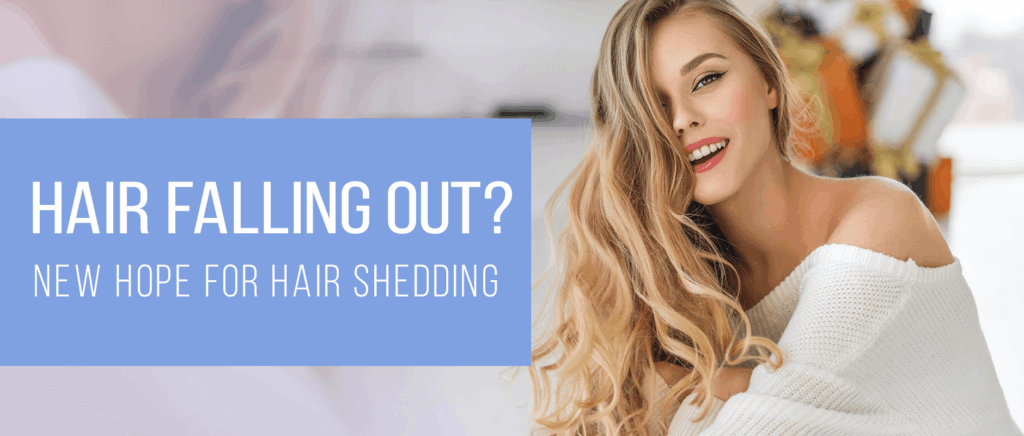
Your hair is an important part of your identity. The way you choose to cut, color and style it is an expression of your personality, telling the world what you’re all about. But when you start to notice hair coming out in clumps as you wash or style it, or if your hair has become fragile, dull and lifeless, you may have cause for alarm.
Hair thinning and shedding often stem from nutrient gaps, oxidative stress, and follicle dysfunction. Deficiencies in nutrients like biotin, zinc, and vitamins D and C are linked to poor hair growth and fragility. While a small amount of daily hair shedding is a normal part of the hair growth lifecycle, large amounts coming out at once may indicate health or nutrition issues that demand your attention.
Learn about the hair growth lifecycle, the main causes of excess hair shedding, and how the Hair Vitality Protocol offers a holistic solution for fuller, healthier hair.
The Hair Growth Cycle
Your body is constantly making new hair as older hair reaches its limits and falls out, clearing a path for new growth. On average, people shed about 50-100 scalp hairs a day as a natural part of the hair growth lifecycle. But if you experience abnormal amounts of hair thinning or shedding, it could be a sign of something serious.
The hair growth cycle consists of four main phases:
- Anagen (the active growth phase) lasts for 2-7 years, where hair follicles produce new hair cells. Up to 90% of your hairs remain in the anagen phase at any time. The length of the anagen phase determines the length of your hair, which varies from one individual to the next.
- Catagen (a short transitional phase) lasts for about 2-3 weeks. In this phase, hair stops growing, the hair follicle shrinks and detaches from the blood supply, and a “club hair” is formed. About 1–3% of hairs are in this phase at any given time.
- Telogen (the resting phase) lasts about 3-4 months. In this phase, the hair follicle is dormant, and the club hair is fully formed. About 10–15% of hairs are in this phase. Although the hair remains anchored to the scalp, it will eventually detach and shed.
- Exogen (the shedding phase) is where the old hair sheds, and a new hair begins to grow in its place, restarting the anagen phase. Losing 50–100 hairs daily during this phase is normal.
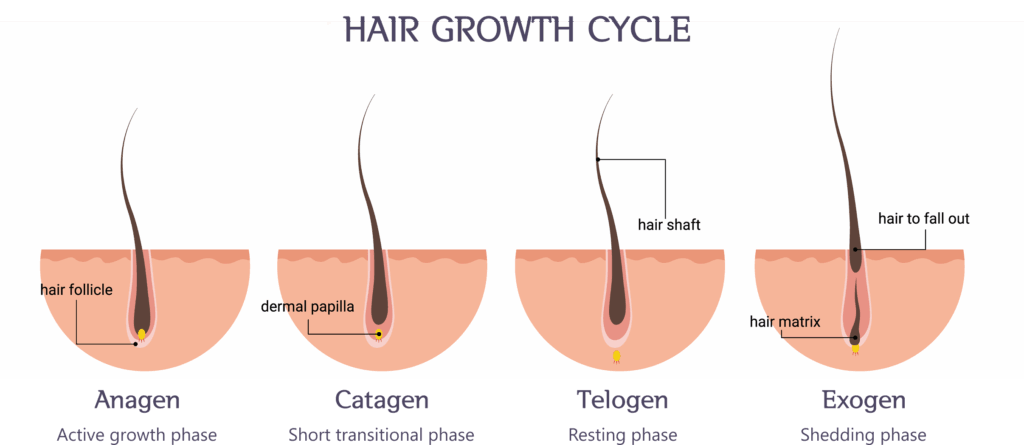
All your hairs cycle through these phases at different times, with each hair follicle operating independently. While genetics plays a key role in the length of your hair cycle – and your hair – other factors can influence the cycle.
Factors that can disrupt the hair cycle include:
- Hormonal fluctuations
- Emotional stress
- Diet and nutrition
- Medical conditions
- Pharmaceutical drugs
Scalp hair follows this cycle, giving you your flowing locks, while body hair has a much shorter anagen phase, thereby accounting for shorter hairs.
What Causes Hair Shedding?
Hair shedding is a normal part of the hair growth cycle, but excessive shedding can be triggered by various factors, some of which are beyond your control.
Here are some of the more common causes of excess hair shedding:
- COVID-19 infection tops the chart. A 2024 study of 500 women who were previously infected found that 61.4 of them reported post-infection hair shedding, with 60.8 being caused by telogen effluvium.
- Telogen effluvium is a temporary condition brought on by stress, illness, or hormonal changes, pushing more hairs into the telogen (shedding) phase. It is triggered by major emotional or physical stress, such as a life-altering catastrophe, severe illness, or major surgery.
- Hormonal fluctuations can trigger hair loss, especially during pregnancy, postpartum, or during menopause. Thyroid disorders can also cause hair to shed.
- Certain medications and therapies can disrupt the hair cycle, such as antidepressants, birth control pills, hormone replacement therapy, beta-blockers, and chemotherapy.

COVID-19 infection
Post-infection hair loss, often telogen effluvium
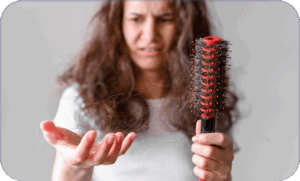
Telogen Effluvium
Triggered by illness, trauma, or surgery

Hormonal Shifts
Pregnancy, postpartum, menopause, thyroid imbalance

medications
Caused by antidepressants, HRT, birth control, beta-blockers, chemotherapy
- Nutrient deficiencies can affect the strength and texture of your hair, causing it to break or fall out. Insufficient dietary protein and fatty acids, deficiencies in zinc, biotin, or other B vitamins, and lack of iron, ferritin, or vitamin D can all be contributing factors.
- Scalp conditions like dandruff or seborrheic dermatitis can cause scalp inflammation, triggering hair loss. Fungal infections to the scalp, and autoimmune conditions like alopecia areata can cause patchy hair loss.
- Medical conditions such as lupus, polycystic ovary syndrome, diabetes and kidney disease can all cause hair shedding.
- Abuse from chemical treatments and styling tools can disrupt the hair growth cycle, or cause hairs to become brittle and break. Perms, hair colors, harsh hair products, and even tight hairstyles can all lead to hair shedding.
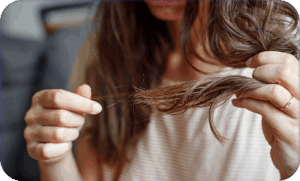
Nutrient Deficiencies
Lack of protein, vitamins, iron, or vitamin D weakens hair
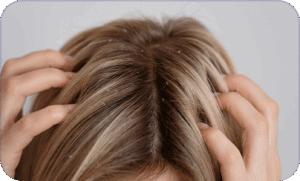
Scalp Conditions
Dandruff, dermatitis, fungal infections, or alopecia cause shedding

Medical Disorders
Lupus, PCOS, diabetes, or kidney disease contribute to hair loss
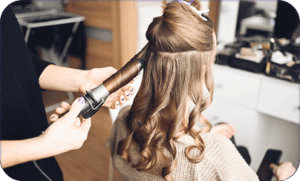
Styling & Chemical
Harsh treatments, dyes, or tight hairstyles break hair
- Exposure to environmental toxins in tap water, swimming pools, and air pollution can influence hair shedding.
- Aging can weaken the hair follicles, leading to more shedding and thinner hair.
- Hereditary factors like male pattern baldness can dictate how much hair you shed.

Environmental Factors
Polluted water, air, or toxins can trigger shedding.
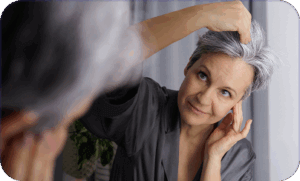
Aging
Weaker follicles with age cause thinning and shedding

Hereditary factors
Hereditary patterns like male baldness drive hair loss
Hair Vitality: A Holistic Treatment for Hair Shedding
Healthy hair begins from within, supported by specific nutrients and a healthy scalp. When it comes to hair loss, there are hundreds of products available that promise results, but few that deliver.
Unlike topical treatments, the Hair Vitality Protocol targets the root causes of hair shedding, including nutrient deficiencies, oxidative stress, and poor follicle circulation. Hair Vitality is a 5-week program that combines in-clinic therapies with at-home peptide care, for tangible results.
Key components of Hair Vitality include:
- IV Nutrient Infusions, to directly deliver essential vitamins, minerals, amino acids, and antioxidants that support follicle growth, scalp health, and hair structure.
- GHK-Cu Hair Serum, a medical-grade copper peptide serum for strengthening hair, improving texture, and stimulating natural regeneration.
- Infrared & LED Light Therapy boosts circulation and enhances nutrient absorption at the follicle level.
- Injectable Boosters of CoQ10 improve mitochondrial function, while Vitamin D supports immune and hair health.
Key components of Hair Vitality
The Hair Vitality protocol is designed to help people experiencing post-COVID hair shedding and health changes, hair thinning along the part or hairline, slow hair growth with fragile strands, and anyone with damaged hair looking for a holistic solution.
What to expect from the Hair Vitality protocol:
- Stronger, healthier strands
- Reduced daily shedding
- Improved hair thickness, texture, and manageability
- A healthier scalp
- Enhanced confidence
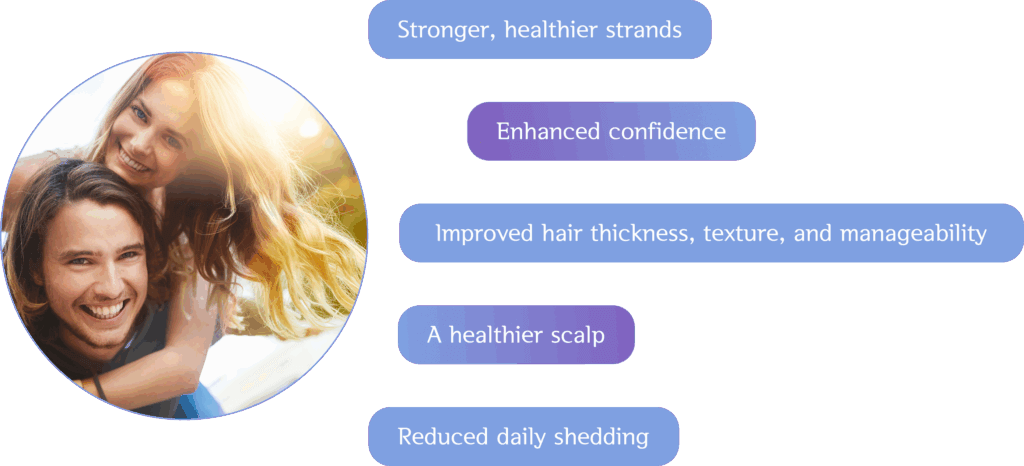
Get Fuller, Healthier Hair with Hair Vitality in NYC
If you are noticing hair thinning or shedding, or dull, fragile strands, Invita Wellness in SoHo, NYC has the perfect solution. Our Hair Vitality Protocol offers a holistic, science-backed approach to restoring hair strength, thickness, and overall scalp health.By combining targeted nutrition, peptide therapy, and light stimulation, the Hair Vitality Protocol addresses the underlying causes of hair shedding to promote stronger, healthier hair.
If you’re ready to revitalize your hair and restore confidence, contact Invita Wellness in SoHo, NYC, to learn more and schedule your consultation.
*Results may vary; this protocol supports hair wellness but is not a medical cure for hair loss.
Get Fuller, Healthier Hair in NYC
contact InVita Wellness today
Book Now
456 Broadway 2 Floor, New York, NY 10013, USA
Resources
Awad, Nehal El Hendawy Ali, et al. “Hair disorders associated with post-COVID-19 infection in females: a cross-sectional study.” Irish Journal of Medical Science (1971-) 193.2 (2024): 761-767.